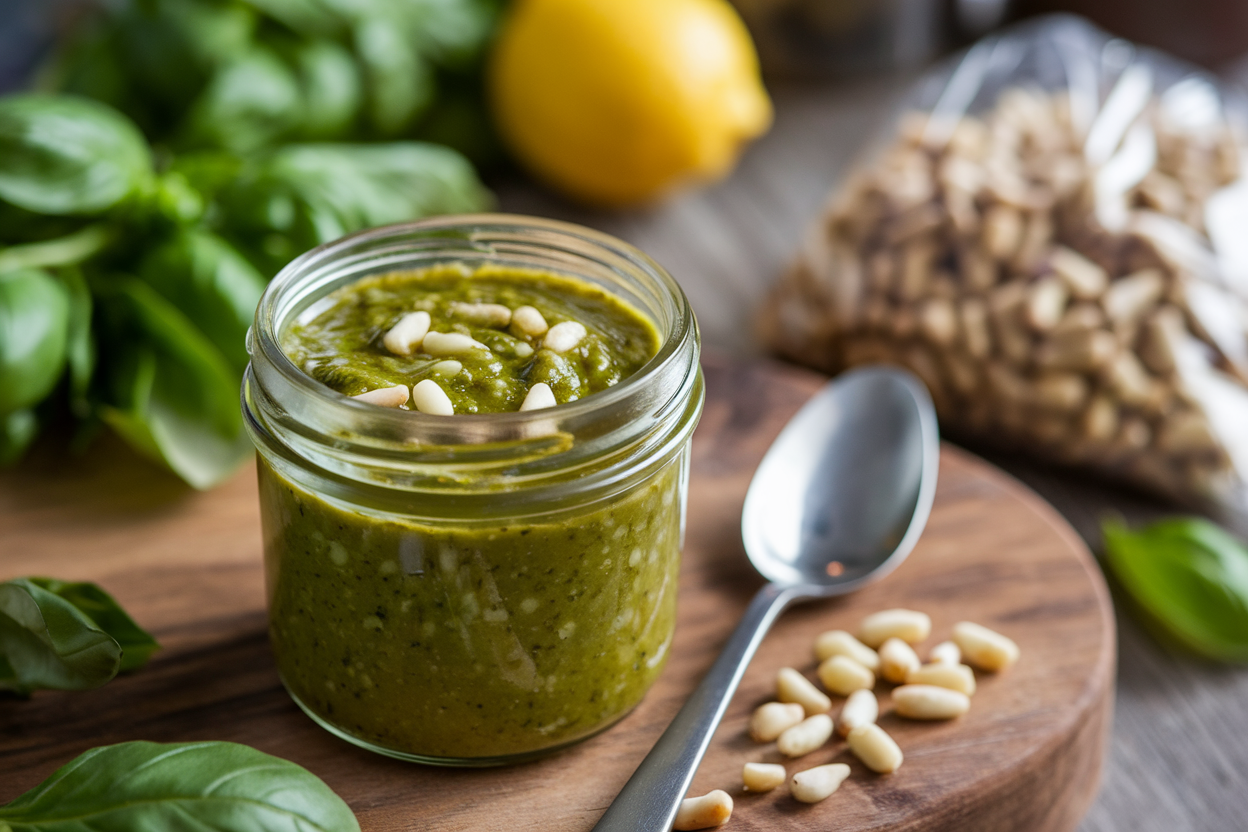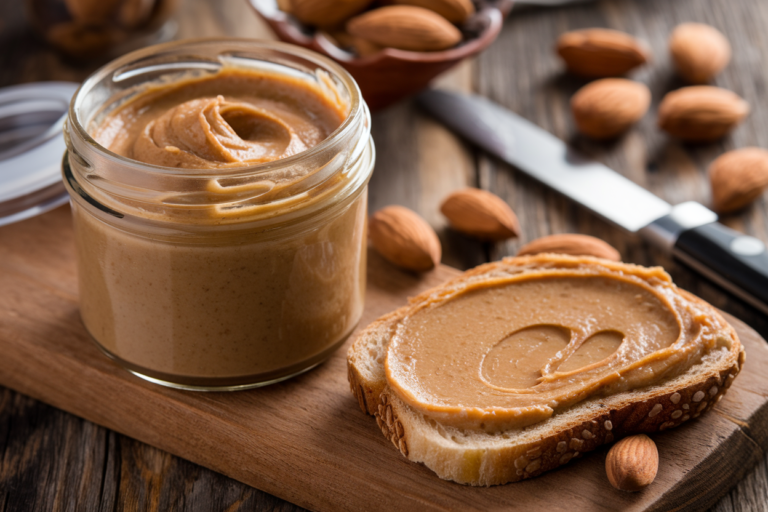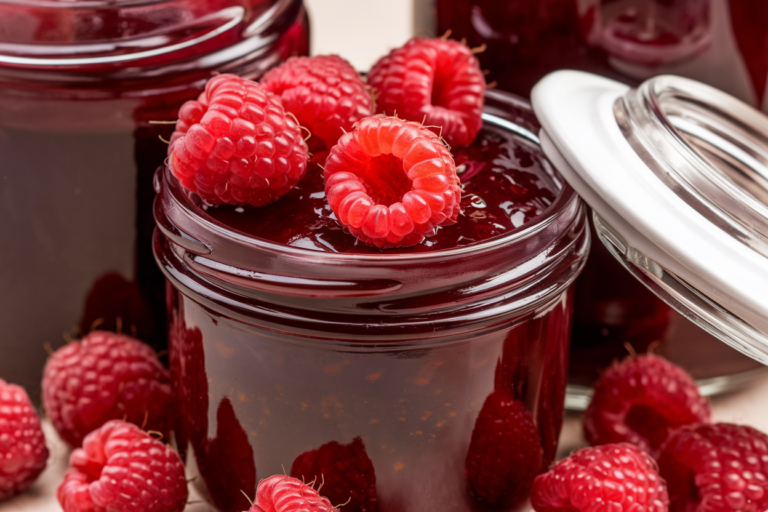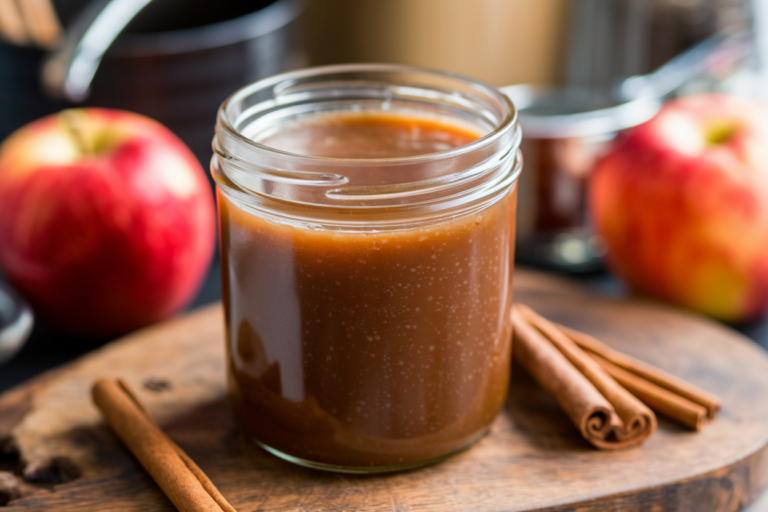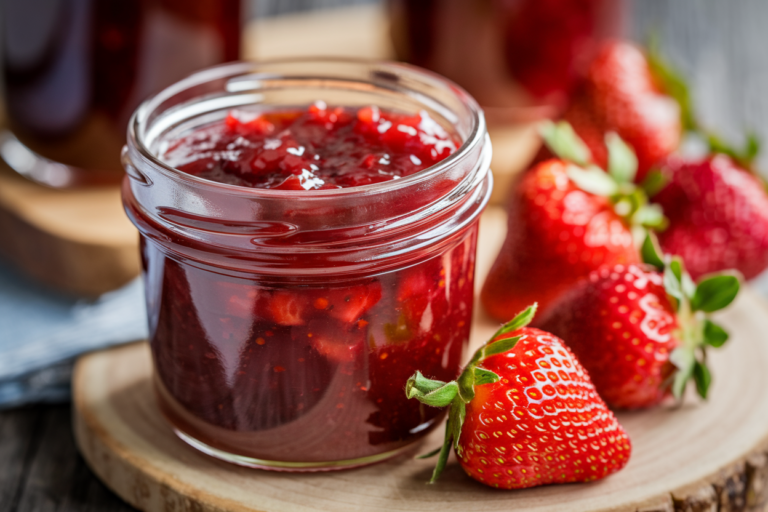DIY Pesto Sauce: The Lazy Genius’s Secret Weapon
You’re five minutes away from the most versatile, flavor-packed sauce of your life. No fancy skills, no overpriced store-bought jars, and definitely no excuses. Pesto is the ultimate cheat code for turning bland into grand—whether you’re drowning pasta, slathering sandwiches, or pretending to be a gourmet chef.
And guess what? Your blender does all the work. Why settle for mediocre when greatness is this easy?
Let’s get to it.
Why This Recipe Slaps
This isn’t your nonna’s 12-hour simmer sauce. It’s bright, herby, and nutty, with a punch of garlic and Parmesan that clings to everything like your ex’s unresolved feelings. The magic? Fresh basil (none of that dried nonsense), good olive oil, and a texture that’s creamy without being gloppy.
Plus, it freezes like a dream—meaning you’re always one thaw away from a flavor win.
Ingredients You’ll Need
- 2 cups fresh basil leaves (packed, stems are freeloaders—toss ’em)
- 1/3 cup pine nuts (or walnuts if you’re budget-conscious)
- 2 garlic cloves (because one is for amateurs)
- 1/2 cup grated Parmesan (real stuff, not the sawdust bag)
- 1/2 cup extra-virgin olive oil (the fruitier, the better)
- 1/2 tsp salt (adjust to taste, but don’t be shy)
- 1 tbsp lemon juice (optional, but it keeps the color vibrant)
How to Make Pesto Like a Pro
- Toast the nuts. Low heat in a dry pan for 2–3 minutes until golden. Burning them is a crime—watch closely.
- Blitz the garlic and nuts. Pulse in a food processor until coarse. No processor?
A mortar and pestle work, but bicep gains are implied.
- Add the basil. Pulse a few times until chopped. Over-processing turns it to sludge—restraint is key.
- Drizzle in the oil. Slow and steady while the processor runs. Emulsion isn’t just a fancy word; it’s your texture lifeline.
- Stir in the cheese and salt. Fold by hand to avoid overmixing.
Taste. Adjust. Repeat until you’re smug.
How to Store Your Liquid Gold
Pour leftovers into an airtight jar, top with a thin layer of olive oil to prevent browning, and refrigerate for up to a week.
🍫 The Ultimate No-Bake Dessert Ebook 🍓
30 mouthwatering no-bake recipes you can whip up in minutes — creamy cheesecakes, fruity parfaits, chocolatey bars, and more!
- ⚡Quick & easy — no oven required
- 📖30 recipes + bonus treat
- 🍓Chocolate, fruit, nutty & refreshing flavors
- ✨Beautifully designed, instant download
For long-term hoarding, freeze in ice cube trays and transfer to a bag—each cube is a future meal’s salvation.
Why This Recipe is a Game-Changer
Pesto is the ultimate multitasker. Toss it with pasta, drizzle on pizza, mix into mayo for sandwiches, or use as a marinade. It’s packed with healthy fats, antioxidants from the basil, and enough flavor to make even sad desk lunches exciting.
Plus, homemade means no weird preservatives—just pure, unadulterated deliciousness.
Common Mistakes to Avoid
- Using stale nuts. They taste like cardboard. FYI, no one likes cardboard.
- Over-processing. You want pesto, not basil soup.
- Cheaping out on oil or cheese. Low-quality ingredients = low-quality results. IMO, it’s not worth it.
- Skipping the lemon juice. Without acidity, your pesto turns brown faster than a banana in the sun.
Swaps and Subs
No pine nuts? Walnuts or almonds work.
Vegan? Skip the cheese or use nutritional yeast. Out of basil? Spinach or arugula make decent stand-ins (but let’s be real, it’s not the same).
FAQs
Can I use dried basil?
No.
Just no. Dried basil lacks flavor and texture. Fresh or bust.
Why did my pesto turn brown?
Oxidation.
Lemon juice helps, but storing it with a layer of oil on top is the real MVP.
Can I freeze pesto?
Absolutely. Freeze in portions for up to 3 months. Thaw in the fridge or microwave (gently).
Is pesto gluten-free?
Yes, unless you add something weird.
Check your cheese labels if you’re strict.
Can I make it without nuts?
Sure, but you’ll lose the nutty depth. Sunflower seeds are a decent backup.
Final Thoughts
Pesto is the culinary equivalent of a mic drop. It’s fast, flexible, and foolproof—assuming you don’t burn the nuts.
Whip up a batch, stash it everywhere, and watch your meals level up instantly. Now go forth and pesto all the things.

